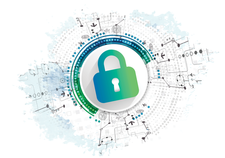The Signal messenger app encrypts voice and text messages
Private Messenger

Signal is an efficient private messenger app that encrypts voice and text messages, integrates easily into existing interfaces, and places all communications in a single display.
Dozens of private messenger apps are available today; however, only one has the endorsement of both Edward Snowden and Bruce Schneier and is recommended by both the Electronic Frontier Foundation (EFF) and the American Civil Liberties Union. That app is Signal Private Messenger, developed by the non-profit Open Whisper Systems [1] for Android, iOS, and desktop environments. These endorsements are the result of not just Signal's ability to encrypt voice and text messages, but also its ability to integrate into existing interfaces for ease of installation and use.
Signal originated in RedPhone and TextSecure, two proprietary encryption tools for Android developed by Whisper Systems, founded by Moxie Marlinspike and Stuart Anderson. Whisper Systems was bought by Twitter in November 2011, and within half a year, both RedPhone and TextSecure, were released under the third version of the GNU General Public License. A year later, Marlinspike left Twitter to found Open Whisper Systems, which is funded by donations and grants, a neutrality that partially explains the high regard for its products.
Since 2013, Open Whisper Systems has merged RedPhone and TextSecure into a single application, adding encrypted group chat and gradually developing Android and iOS versions with comparable feature sets. Recently, it released a beta version of Signal Desktop [2] in the form of a Chrome app. So far, the desktop version, compared with the other versions, has a simplified feature set lacking password protection, for example. However, when linked to a mobile device, Signal Desktop provides centralized storage, as well as the increased usability of a mouse and a full-size keyboard.
[...]
Buy this article as PDF
(incl. VAT)
Buy Linux Magazine
Subscribe to our Linux Newsletters
Find Linux and Open Source Jobs
Subscribe to our ADMIN Newsletters
Support Our Work
Linux Magazine content is made possible with support from readers like you. Please consider contributing when you’ve found an article to be beneficial.

News
-
Two New Distros Adopt Enlightenment
MX Moksha and AV Linux 25 join ranks with Bodhi Linux and embrace the Enlightenment desktop.
-
Solus Linux 4.8 Removes Python 2
Solus Linux 4.8 has been released with the latest Linux kernel, updated desktops, and a key removal.
-
Zorin OS 18 Hits over a Million Downloads
If you doubt Linux isn't gaining popularity, you only have to look at Zorin OS's download numbers.
-
TUXEDO Computers Scraps Snapdragon X1E-Based Laptop
Due to issues with a Snapdragon CPU, TUXEDO Computers has cancelled its plans to release a laptop based on this elite hardware.
-
Debian Unleashes Debian Libre Live
Debian Libre Live keeps your machine free of proprietary software.
-
Valve Announces Pending Release of Steam Machine
Shout it to the heavens: Steam Machine, powered by Linux, is set to arrive in 2026.
-
Happy Birthday, ADMIN Magazine!
ADMIN is celebrating its 15th anniversary with issue #90.
-
Another Linux Malware Discovered
Russian hackers use Hyper-V to hide malware within Linux virtual machines.
-
TUXEDO Computers Announces a New InfinityBook
TUXEDO Computers is at it again with a new InfinityBook that will meet your professional and gaming needs.
-
SUSE Dives into the Agentic AI Pool
SUSE becomes the first open source company to adopt agentic AI with SUSE Enterprise Linux 16.

